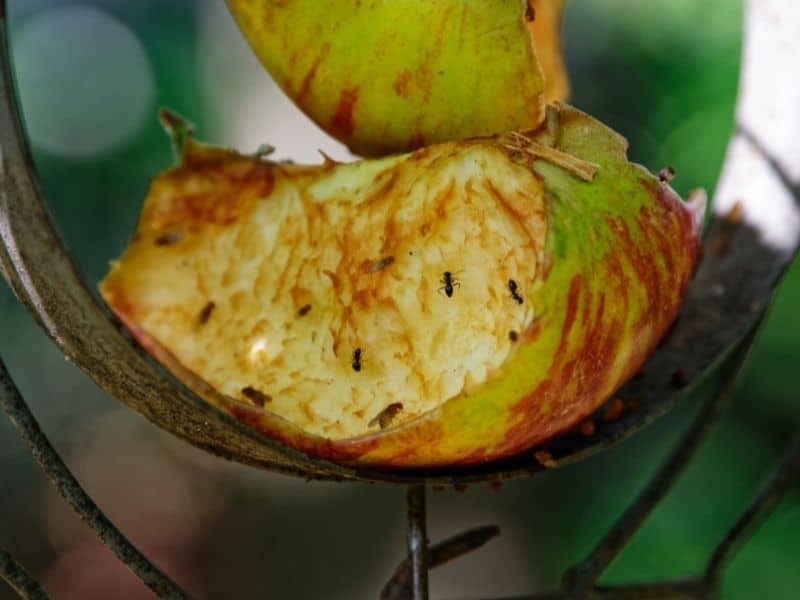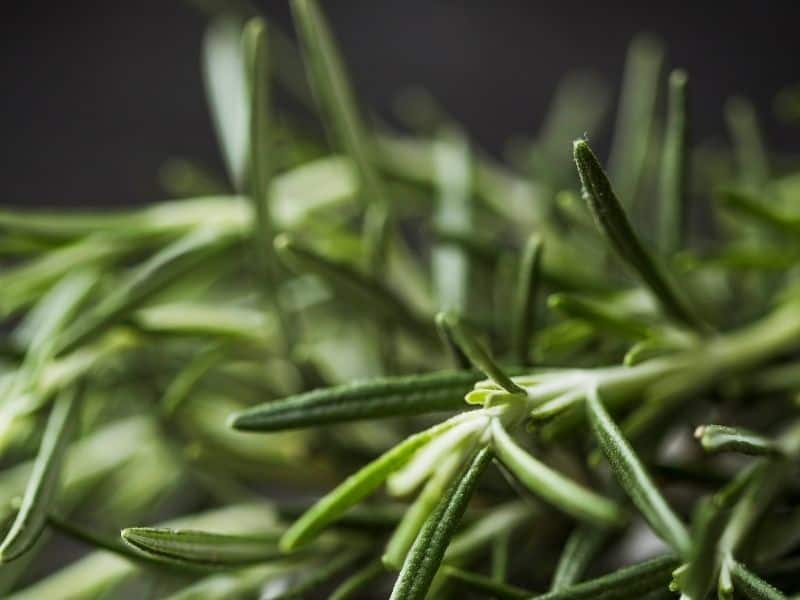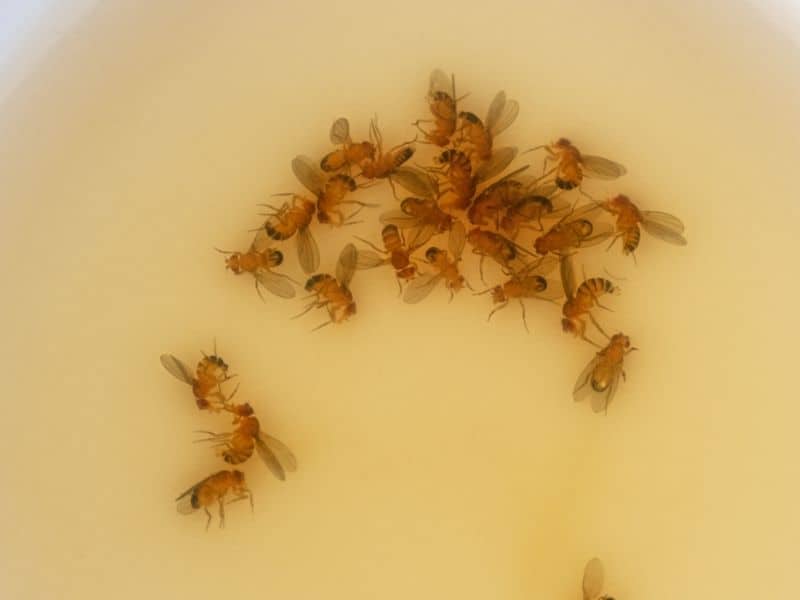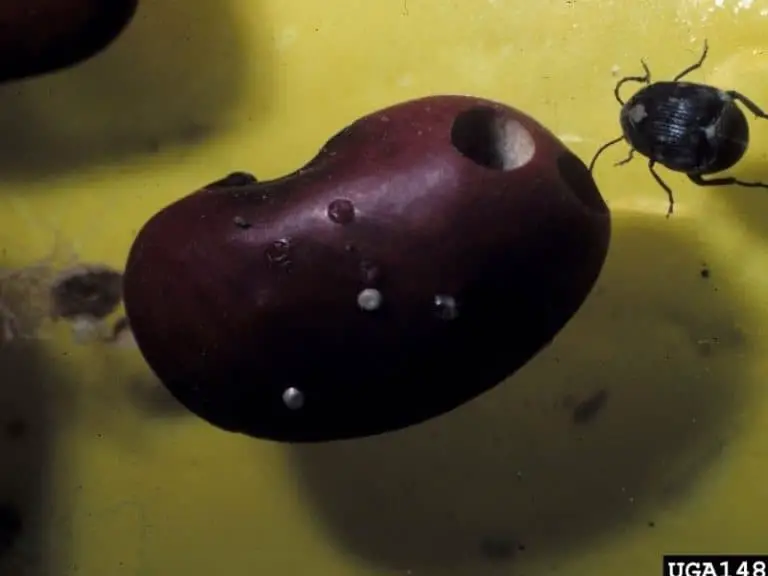10 Things That Fruit Flies Hate [plus 15 Fruit File Repellent Plants]
Bugs are always unwelcome in the home, and we want to know what fruit flies hate in order to keep them away. Getting rid of fruit flies is not a simple matter of shooing them away. You need longer-term and better solutions. The first step is to determine what fruit flies hate and what attracts them, so that we can use this knowledge to our advantage and repel them or trap and eliminate them.
Fruit flies hate cinnamon, essential oils, camphor, vodka, basil, cloves, lavender, bay laurel, mint, and rosemary. They also hate plants like tansy, rue, wormwood, pennyroyal, citronella, eucalyptus, sweet woodruff, catnip, and marigold. They hate Venus flytraps the color blue, and clean areas.
Fruit flies are attracted to all places that will assist and support their survival. In contrast, they will not stay long in areas that have nothing that they need or are hostile to their continued existence.
Overripe fruits and vegetables are attractive to them because they serve as food and ideal egg-laying sites. Fruit flies love areas with moisture with fermenting materials, such as drains, trash bins, and more.
In this article, we will help you determine the things which fruit flies hate, which things attract them, and how to effectively get rid of them.
Things That Fruit Flies Hate
You need to know what repels fruit flies in order to get rid of them. If you observe very small flies flying around in the kitchen, most probably they are fruit flies. They are tiny flying insects that are a real annoyance in the home, and they can be present throughout the year.

They are, however, more active during late summer up to autumn because of the decaying veggies and fruits that attract them.
It is important to know which smells fruit flies like and which smells repel them. You can use the former to trap them, and you can use the latter to keep them away.
There are several scents that fruit flies hate, and they come from certain plants. If you grow such plants with these scents, your home will smell lovely all day, while also repelling fruit flies 24/7. We enumerate them below.
Cinammon
This can be used as the scent of your air freshener to repel fruit flies.
Essential oils
You can use essential oils to repel fruit flies, and these oils come from many plants and herbs. They are useful in making fly deterrent sprays. Such oils include lavender, peppermint, lemongrass, and eucalyptus.
Camphor
Camphor has been a common deterrent for moths, and is used as an ingredient of moth balls. It discourages fruit flies from going near.
Vodka
The scent given off by vodka repels flies and can also be used as a repellent spray.
Basil
The scent of basil is pleasing to us, but not to fruit flies. It also repels other insects such as mosquitoes.
Cloves
House flies particularly hate the smell of cloves. They can be placed inside lemons to emit an aroma that flies hate.
Lavender
Lavender has a strong scent that keeps fruit flies and other insects away when its flowers are dried and placed in various areas of the home.
Bay laurel
The aroma of this herb, whether dried or fresh, is effective in repelling fruit flies. It is a challenge to grow it in places where the cold of winter can kill it. You may bring it indoors during this season.
Mint
The mint plant family has a scent that also wards off fruit flies. It is also effective in repelling other pests such as ants and mice. Mint in the form of essential oils has many other potent uses as well.
Rosemary
This plant has a smell that repels cats, fruit flies, and mosquitoes. It grows all throughout the year if it is cared for properly. It is also useful in cooking.
What Plants And Herbs Do Fruit Flies Hate?
Many of the scents described above also involve the same plants that will be discussed here. In this section, we will discuss many other aspects of plants and a few pointers in caring for them in your efforts to eliminate fruit flies. These plants are generally perennial.
In addition, these plants also add to the aesthetic quality of your garden and home, aside from making your surroundings smell great.
Some of them can help repel fruit flies jut by simply having their presence nearby. Other plants have to have their oils extracted to make them potent for keeping away fruit flies.
Bay laurel
The glossy leaves of bay laurel has traditionally been utilized in cooking as aromatic. These leaves are also put in cupboards for keeping insects and pests such as mice and weevils at bay. It also has a pungent scent that can be hung in places during fruit fly season.
This plant does very well if potted and even indoors. It grows slowly, so that it can tolerate a cramped environment. It needs well drained, rich soil especially in its early years before being well established.
Bay leaves can be combined with rosemary to create a very effective fruit fly repellent.
Sweet basil
This plant thrives in pots as well, and can be placed near entrances to keep fruit flies away. It is also useful in vegetable patches to protect tomatoes, squash, and other vegetables from insect pests. It also repels rose bugs.
It is important to prevent this plant from flowering, because this will hinder the propagation of its sweet scented leaves. When flower stalks start growing during late summer, simply cut off the flowers and some branches and leaves to make room for more leaf growth.
The basil plant is an annual, but it can also reseed in a warmer environment if it is allowed to bloom. It is easily cultivated and transplanted, and is available in local gardening stores.
There are dozens of basil varieties having unique scents, such as cinnamon, licorice, and lemon. They are all useful for controlling insects.
Lavender
Lavender likes sunny, hot, and well-drained climates and areas. Its fragrant blooms and foliage repel many insects. It even makes clothes fragrant if the dried flowers are placed around your home.
It is very easy to propagate. It has different varieties that fit different climates and spaces. Take note that winter temperatures can freeze the roots and kill this normally hardy plant. It will do well in the shed in winter, as well as wrapping the pot and even burying it.
After three years, this plant will have a bunch of flowers as it establishes. In fact, a single plant can have more than a thousand flower stems.
The fragrance that lavender emits deters fruit flies, mosquitoes, moths, spiders, and ants.
There are Spanish, French, and English varieties that can be kept indoors. The French variety is more hardy, while the English variety has more aroma, and thus could be more effective in controlling fruit flies.
Lavender needs much light and good air ventilation. Cold drafts, however, are unwelcome. The soil in which it is planted should be loose so as to avoid sogging the roots.
Lavender can grow quite large within just one or two seasons. You may slightly delay growing with pruning, but be prepared to repot soon. Alternatively, you can also divide it into several pots to better control its size.
Rosemary

Rosemary can be evergreen depending on its care. It is capable of growing up to three or four feet in height and five feet in width. The heady aroma coming mostly from its leaves repels flies.
It can do well even during winter; you should protect it indoors in freezing temperatures especially with frequent deep freezes.
It may be combined with bay leaves as a natural way of deterring fruit flies; they hate this smell.
It needs direct sunlight for six to eight hours per day and good ventilation; otherwise, it may get mildew. It also needs a lot of water with good drainage.
A pot of this plant is good to add aroma to the indoor garden while also repelling fruit flies.
Tansy
This plant’s best use is as an essential oil that is sprayed as a fruit fly repellent. You can spray this along your door and window frames where fruit flies usually gain access to your home.
Both the dried and fresh leaves are useful for this purpose, although the dried leaves have a stronger repelling action due to their higher oil concentration.
Tansy is simple to grow and has beautiful yellow flowers. It may not be used in cooking; it is irritating and is actually toxic in high quantities. The plant thrives with regular watering and indirect sunlight.
Mint
This plant family includes spearmint, peppermint, sweet mints, chocolate mints, and citrus mints. These plants contain mentha, the active ingredient that makes them effective against insects, including fruit flies.
Mints are aromatic whether dried or fresh, although they are much more potent in the form of essential oils. Mint is effective in repelling insects whether it is kept nearby, rubbed on the skin, or sprayed as essential oil.
Mint plants grow fast and are hardy. They self-pollinate and quickly spread. Mint is a popular cooking, food, and beverage ingredient. It is also helpful in aiding digestion.
It needs at least four hours bright sunlight and adequate watering that does not dry off the soil.
Spearmint is among the most potent scents within the mint family.
Rue
This is a woody plant that has a strong scent capable of deterring many insects. It also has disinfecting properties and is useful as a calming agent.
Due to its high potency, this is normally left out as a choice for normal uses and is best left in the wild. Mere rubbing of the leaves may induce blistering and sensitivity. Consider this plant in your fly deterrent options only if you know how to use it properly.
This plant can reach two feet, with bluish leaves that can thrive in poor soil. The potency of its leaves is highest when it is prevented from flowering.
Wormwood
The leaves of this plant have a resinous content that has natural insecticidal properties. Fresh leaves rubbed on clothing and skin can help keep insects away. Its dried leaves can be placed in closets, doorway entrances, and other insect access points.
Maybe you are familiar with wormwood’s more famous name, which is absinthe. It has been a medicinal plant used for three millennia. It is also used to flavor beverages.
It can have negative effects if large amounts are ingested. However, external application is safe.
Pennyroyal
This plant is also highly potent, and its use should be coupled with caution. Just like wormwood, ingestion could be dangerous. It is, however, safe for use as aromatic oil by rubbing its fresh cuttings into clothes and hats as a fly repellent.
It is also useful as a repellent in the garden to protect susceptible vegetables. Planting it around vegetables will give them protection due to pennyroyal’s natural insecticidal properties. This is part of the mint family which can quickly become invasive. This plant is useful in your efforts on how to get rid of fruit flies on plants.
Citronella
This grass is popularly used as an ornamental, and is commonly seen in landscapes in areas that are frost-free. It cannot thrive in colder climates; however, it can thrive indoors.
It cannot ward off biting insects, but can repel mosquitoes. Its fronds’ oil can provide relief if it is rubbed on clothing and skin, due to its insecticidal effects. The effect only lasts two hours.
The oil is also suitable as a spray, an anti-fungal, and an anti-bacterial agent.
True citronella is not too common. It has long leaves and also looks very much like grass. The “citronella” labeled geranium resembles parsley and is not real citronella.
This grass needs an environment with a lot of sun. During winter, give it grow light.
Eucalyptus
This plant is a miticide and insecticide. Its scent deters flies, although the extracted oil of its leaves is more potent. The oil can be rubbed from crushed leaves as well. It also has antibacterial properties.
Sweet woodruff
This plant is hardy and is carpet-like, growing up to 12 inches high. Its leaves are umbrella-like, with white flowers emitting a fresh and sweet smell. It is easy to cultivate and needs moist soil and indirect light.
This plant is a natural fly deterrent.
Catnip
This plant repels mice and insects especially if planted along areas that they use to gain access to your home. It contains insect repellent ingredients such as citronella oil. It can be used to deter insects much like the way citronella grass is used.
It has a silvery foliage and is related to the mint family.
Marigold
It can repel whiteflies in the indoor garden. It can thrive better outdoors since it needs full sunlight with warm temperatures. Its scent is capable of warding off many other insects as well.
Venus flytrap
It can thrive as a houseplant that not only helps in fly control but also adds an interesting aspect to your home. However, this plant needs special attention. It is all worth it, however, since it really consumes fruit flies.
It needs an acidic soil and very high moisture. Thus, it is suitable in a glass terrarium. The soil should not be soggy. It likes misting and does not like direct sunlight. It likes shade and indirect light. It may be planted in potting mix soil that mostly contains peat moss. It should be watered with distilled water to keep its soil acidic.
What Color Do Fruit Flies Hate?
Researchers from the University of Miami found that fruit flies have a preference for light that is dependent on color and time.

They have been found to be attracted to green light in the early morning and during late afternoon. This is the period that the flies are most active. Meanwhile, they prefer dim or red light during midday, during which they like to slow down in order to eat and perhaps take a nap.
Fruit flies have also been found to have a “robust avoidance” of blue light regardless of time of day. This is in stark contrast to the assumption held by scientists for decades that fruit flies get attracted to this color, which drives their circadian rhythm.
According to the study which discovered flies’ preference against blue light, what is most surprising is that color preference generally differs depending on time of day.
Their clear preference for differing colors at various hours during the day has been demonstrated to be consistent between individuals and even between different genotypes.
Based on a well-crafted experiment, scientists have found that fruit flies consistently flew away from blue light, while preferring green light. Roughly 50% of the study animals preferred red and dim areas during midday, and returned to preferring green as the day approached to an end.
During hours when there was no light, the flies were randomly scattered in red, green, and blue zones, indicating that preferences depended on the presence of light.
The study discovered that if fruit flies were given a choice under natural conditions, they will prefer green colors, such as the leaves of fruit trees in which they like laying their eggs.
A series of experiments which involved genetic manipulations found that the color-driven behavior of fruit flies is not only dependent on visual cues, but also on the cells in their abdomen that are light-sensitive. These cells sense the color blue.
In addition, the presence of the flies’ internal clock produces the behavior of shifting to the dim light zone during midday from being in the green color zone. If the clock genes are removed, they perpetually stay in green and never shift to the dim light zone.
However, regardless of the presence or absence of the clock genes, the flies continue to avoid the blue color. It is a function of their abdominal cells, which are independent from their clock genes.
Many fly traps today also feature the color yellow, because this color attracts them as well.
This discovery by the researchers of the University of Miami contradicts the assumption that has been held for decades that blue light attracts fruit flies, and that yellow repels them.
Experiments from the 1970s and even up to as late as a study that was reported in 2012 have shown that blue is the main driver of the flies’ circadian clock. As an example, University of Florida researchers created a fly controlling device that is based on the principle that fruit flies like blue and avoid yellow.
Urban entomology professor Phil Koehler and his colleagues developed what they called the Florida Fly Baiter. Their device works on the principle that flies are more attracted to blue compared to yellow by a factor of three. Yellow, they believe, are avoided by flies.
According to the researchers’ tests, over 40,000 flies have been killed by just a single application of insecticide in the device.
They determined the color preference of the flies by means of behavioral tests which showed which color they most likely travelled to. Electro-retinograms measured their eye reaction, which found that they responded to the color blue more. Their study was published in the Journal of Medical Entomology.
A curious feature was the inclusion of black stripes, which increased the effectiveness of the device. These stripes were covered with the insecticide which line the outer side. They mimic the dark crevices that fruit flies like hiding in, thus adding an additional attractant.
What Fruits Do Fruit Flies Hate?
In general, fruit flies are attracted to most if not all ripe vegetables and fruits in your kitchen. Aside from this, they also become attracted to drains, empty cans and bottles, trash disposals and garbage containers, cleaning rags, and mops. They love that moist fermenting material film present in these materials.
Where Do Fruit Flies Come From?
The infestation in your home can come from the fruits and vegetables you bought that are already infested with fly larvae or fly eggs from the market. These include melons, tomatoes, grapes, squash, bananas, and other food items that are perishable. Fruit flies also come from outside.
Fruit flies love rotting onions, potatoes, bananas, and other produce that are not normally refrigerated. They lay eggs near surfaces of fermenting food items and other organic materials that are moist. Once the larvae appear, they feed near these surfaces.
You may thus cut away overripe and damaged fruit and vegetable portions without the need to discard the entire mass. You will have already eliminated most if not all of these developing larvae by doing so.
Fruit flies can reproduce quickly and in massive numbers; each of them can lay approximately 500 eggs. Meanwhile, their entire life cycle starting from the egg up to the adult stage is completed approximately within a week.
How To Get Rid Of Fruit Flies
The presence of fruit flies is a cause for health concern. In addition to utilizing all the things that that they hate in order to repel them, we can also use many other methods, which will discuss in this section.
What is the fastest way to get rid of fruit flies?
There are no shortcuts, and as in many cases, the meticulous, longer way is actually the fastest way, because it is the effective one.
Here we show you a few household tricks and do-it-yourself things that you can do regarding how to prevent fruit flies in your home.
Cleanliness
The first thing to keep in mind is to keep your home sparklingly clean, especially the kitchen. Fruit flies do not like clean surfaces.
Keep your kitchen counters and other areas as clean as you can. Make sure your dish cloths and sponges are also always clean. Never leave dirty dishes in your sink; always wash them immediately after being used. Otherwise, they will be used as breeding areas by fruit flies.
Wipe down counters a minimum of once per day using microfiber cloth and all-purpose cleaning spray. This removes crumbs and other remaining bits of food for fruit flies to feast on, and disinfects surfaces that keep them fresh.
Keep damp dish rags and towels always clean as well. Wash them immediately after using to prevent them from being used by fruit flies as breeding grounds.
You should also keep your drain clean. You may use apple cider vinegar or drain cleaning agent. The drain usually has bits of food items, especially rotting vegetables and fruit, which stay and linger, which can be used by fruit flies for laying eggs.
You can also pour boiling water or boiling white vinegar onto your drains as a method of how to get rid of fruit flies. They are at home in areas that are hidden and moist, such as sink drains and shower drains. Boiling water and boiling white vinegar will instantly kill them and their larvae and eggs.
Keep rotten produce out
Keep all rotten produce from staying in your kitchen. Overripe produce on the counter, rotting onions and potatoes in your pantry, and maintaining cracked and damaged fruits and vegetables, all help in propagating fruit flies.
A single overlooked rotting onion or potato that has been forgotten, hidden at the back; spilled fruit juice under the refrigerator; and all other exposed moist foods are possible areas for fruit flies to breed in the thousands.
A recycling bin in your basement that is rarely or never cleaned or emptied is also ideal for these insects.
Freeze compost
It is a good idea to freeze your fruits and vegetables before you make them compost. This kills fly larvae and eggs. This is particularly important during months where they do not readily freeze outside.
In addition, churn your compost often. You may also trap fruit flies near the compost pile.
Repel them
As we have discussed, many essential oils repel fruit flies, such as those which are derived from basil and other plants. These plants may also be placed near fruit bowls and counters. Basil leaves can also be placed on fruits.
You may also soak your sponge in these oils, such as lavender oil, as well as place cedar balls on the counter.
Wash your produce
As you bring home produce from your grocery store, wash them immediately. You may even wash them outside the house before bringing them in to ensure that no flies, larvae, or eggs make their way inside. You may use any fruit and vegetable wash product for cleaning them.
Also, make sure you cover your fruit bowl on the counter. A plastic wrap or cake dome may prevent flies from going to them and laying eggs.
Prevent access to your home
You can effectively keep fruit flies from entering your home by making sure that you have door and window screens that have no gaps.
Use fruit fly traps
You can also use fruit fly traps. There are several kinds that are very effective. One do-it-yourself trap involves a jar, apple cider vinegar, dish soap, and plastic wrap.
It is also possible to know how to get rid of fruit flies with white vinegar and how to get rid of fruit flies without apple cider vinegar.
You may fill a glass jar halfway with some apple cider vinegar and then punch holes on its lid. Put this jar near your sink or fruit bowl. The cider will attract the fruit flies and enter the jar, trapping them inside.
You can also put white wine or apple cider vinegar plus detergent on a bowl. This also attracts fruit flies; when they feed on the mixture, they will die.
You can also spray fruit flies with rubbing alcohol, which kills them instantly.
Fill a bowl or jar halfway with regular vinegar and a little bit of detergent, and then place a piece of plastic wrap over the top and poke a few small holes in it.
This mixture will attract fruit flies, letting them enter to feed and then trapping and killing them inside. You can also use apple cider vinegar, old beer, or banana for this purpose.
Medical Disclaimer: TheHomePestControl is a digital publisher and does not offer personal health or medical advice. The contents of this website are not intended to substitute for professional medical advice, diagnosis, or treatment.
Affiliate Disclaimer: As an Amazon Associate, I earn from qualifying purchases made on our website. If you make a purchase through links from this website, I may earn a commission at no additional cost to you.


![What Happens if You Eat a Fruit Fly [Egg or Maggott]](https://wypestcontrol.com/wp-content/uploads/fruit-fly-768x576.jpg)
